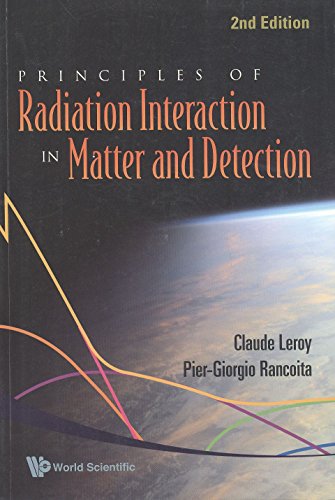Principles Of Radiation Interaction In Matter And Detection epub
Par brewer mark le samedi, mai 28 2016, 05:31 - Lien permanent
Principles Of Radiation Interaction In Matter And Detection. Leroy C., Rancoita P. G.

Principles.Of.Radiation.Interaction.In.Matter.And.Detection.pdf
ISBN: 9812818278,9789812818270 | 951 pages | 24 Mb

Principles Of Radiation Interaction In Matter And Detection Leroy C., Rancoita P. G.
Publisher: WS
We can tell how hot an object is by the radiation it emits. Yes, it tells us there's normal matter — protons, neutrons, and electrons — as well as radiation in the form of photons, and we can theoretically extrapolate that there need to be neutrinos as well, based on what we know . When matter and According to MIT's Samuel Ting, a physicist and the Alpha Magnetic Spectrometer's principle investigator, the first results will be published in two weeks, and “it won't be a minor discovery”; the paper has so far passed 30 revisions and is finally set for publishing. Filaments between interacting clusters", is accepted for publication in Astronomy & Astrophysics. Although dark matter is thought to make up more than 80% of all matter in the universe, it does not interact with electromagnetic radiation and its existence has been inferred from its gravitational effects on visible matter. Gamma rays are also produced in this scenarios. So there is complementarity in the two ways of looking at the cosmos with high-energy gamma and neutrinos. They are expected to be produced in the interaction of high-energy nucleons with matter or radiation. The principles of classical radiobiology are similar for protons and photons even though they differ in terms of physical properties and interaction with matter resulting in different dose distributions. Or maybe it collides either with itself or with normal matter under certain conditions, which would mean that either we should find it annihilating with itself, emitting radiation, or ricocheting off of normal matter, all of which we can detect in principle. However, the tissue volume that can benefit from this feature may be very small in SRS and the corresponding clinical gain might be difficult to detect. Astronomers have observed stars in other galaxies orbiting particularly bright regions containing highly concentrated gas and emitting unusually large amounts of radiation. Understanding atomic structure and the physical mechanisms of radiation interactions is the foundation on which much of the current practice of radiological health protection is based. For example, gas and dust around a black hole emit X-rays as they spiral inwards. Atoms, Radiation, and Radiation Protection offers professionals and advanced students a comprehensive coverage of the major concepts that underlie the origins and transport of ionizing radiation in matter. How Big Are the Largest Black Holes and How Do Astronomers Detect Them? Baryonic matter can, in principle, be detected through the electromagnetic radiation it releases. From here on the universe has been filled with vast numbers of photons that are unable to interact with the matter that it contains. Written by: However, they can still be indirectly detected through their interaction with matter around their boundaries. Protons have special characteristics that allow normal tissues to be .. The detection principle of neutrinos in Antares is based on a signature of the cherenkov light emitted by muons produced in CC interactions. Some physics theories suggest that dark matter is made of WIMPS (weakly interacting massive particles), a class of particles that are their own antimatter partner particles. In recent years the Fermi Gamma-ray Space Telescope has detected a flux of gamma-rays from the centre of our galaxy and the Wilkinson Microwave Anisotropy Probe (WMAP) has revealed a "haze" that also seems to envelop the Milky Way's core.